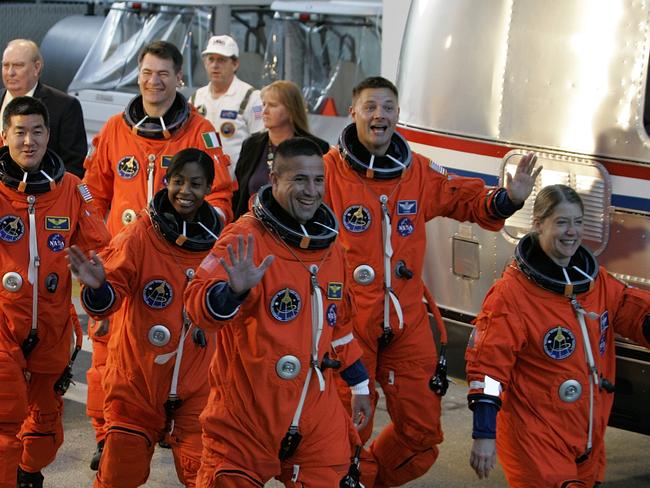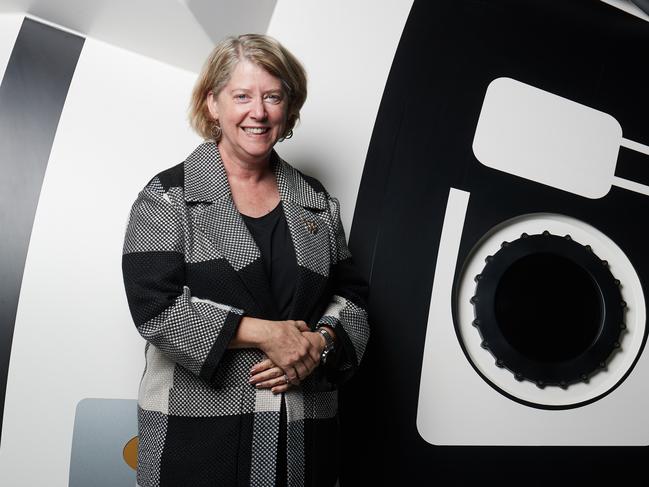50 years ago space was awash with sexism — now a woman is heading for the Moon
Fifty years ago, space was awash with sexism. Now a woman is heading for the Moon — if she can find a spacesuit that fits.
The next human on the Moon is set to be a woman — if she can find a spacesuit that fits.
In March, America’s National Aeronautics and Space Administration cancelled a historic all-female space walk because there was only one medium-sized spacesuit available. Anne McClain had to hand the spot over to her colleague Nick Hague.
But plans are go for a woman on the Moon (and, by the way, the term “human spaceflight” is now preferred to “manned mission”).

Under its Artemis program NASA plans to land a man and a woman on the Moon by 2024. Unless the man is picked to step down first — which is unlikely — it will be a great leap for womankind.
In Greek mythology, Artemis is Goddess of the Moon and the twin sister of Apollo.
“Now,” NASA says, “she personifies our path to the Moon as the name of NASA’s program to return astronauts to the lunar surface by 2024, including the first woman and the next man.”
“When they land, our American astronauts will step foot where no human has ever been before: the Moon’s South Pole.
“With our goal of sending humans to Mars, Artemis is the first step to begin this next era of exploration.”
(Assuming no one else gets there first).

Former NASA astronaut Pam Melroy was the Commander of the space shuttle Discovery, and was inspired to go to space by the Apollo 11 moon landing. She hopes the next Moon landing will in turn inspire women and girls.
She and her family — “a bunch of science and Star Trek nerds” — watched the 1969 moon landing at their beach house.
“It had a huge impact on my career choice — like many astronauts of my age, we were inspired to become explorers,” she said.
She docked with the International Space Station in 2007 and hugged its commander, Peggy Whitson — for the first time, also a woman.
Retired Air Force Colonel Melroy says the industry has changed along with society.
“One of the exciting things that happened to me was to fly in space at the same time as another woman my age,” she said.
“But it happened unintentionally, as a part of a normal crew schedule. There were finally enough women astronauts that it just happened.
“The space industry and astronaut program are just reflections of society — as society has changed for women, so has the industry.”

Colonel Melroy now spends her time shuttling between Houston and Adelaide. She was an advocate for Australia to get a space agency, and has been visiting Australian schools to get children — particularly girls — excited about space and science, technology, engineering and maths — the STEM topics.
Solving real-world problems resonates with women and girls, she said.
Only about 60 of the 500 people who have been into space have been women. The first woman up there was Russia’s Valentina Tereshkova. She was followed two decades later by the first American women in space, Sally Ride.
On the whole, the situation has improved. Many more women are now qualifying as astronauts, and flooding into space-related industries.
This week, Professor Wendy Whitman Cobb wrote that women were “historically excluded from the space program, especially early on”.
Prof Cobb, from the Strategy and Security Studies unit in the US Air Force School of Advanced Air and Space Studies, said while women have made inroads, there’s still a gender gap. She blames stereotypes, and hopes that programs like Artemis will influence young girls.
It needs to — in Australia, only about 15 per cent of engineering graduates are female.
The Australian Academy of Science has found the under-representation of women is a threat to the nation’s prosperity. Launching the Academy’s ten-year plan for gender equity, Australia’s first Ambassador for Women in STEM Lisa Harvey-Smith said Australia needs to be “the clever country again”.
“We need to be getting those large tech companies to stay in Australia and we need to be developing business capabilities around the new economies and become worldwide competitive again,” Prof Harvey-Smith said.

The Federal Government has pledged $3.4 million to help women join the space race, by boosting their numbers in STEM careers. Part of that project is to heighten the visibility of girls and women in STEM — and the Government hopes that space programs featuring women will help as well.
Space Minister Karen Andrews is championing Australia’s space industry as a way to get more young women and girls studying STEM, skills that three in four jobs of the future will need.
“When I was growing up, during the Apollo program, you could buy models of the spacecraft,” she said.
“My Dad bought one for my sister and I for every launch he could. We would sit there at night and build these space vehicles.”
Space has proven inspirational for generations — Ms Andrews said her daughters then bought her a model from a Washington museum.
And now she’s the Space Minister — officially, the Minister for Industry, Science and Technology. The head of the Australian Space Agency is also a woman — Dr Megan Clark.
Times have changed, but they need to keep changing.
Poppy Northcutt — the first female in Mission Control — spoke to reporters this week about what it was like in the time of Apollo.
“We existed in a sea of sexism. The waters are a little clearer now. They’re not as murky as they were 50 years ago,” she said.
Originally published as 50 years ago space was awash with sexism — now a woman is heading for the Moon



